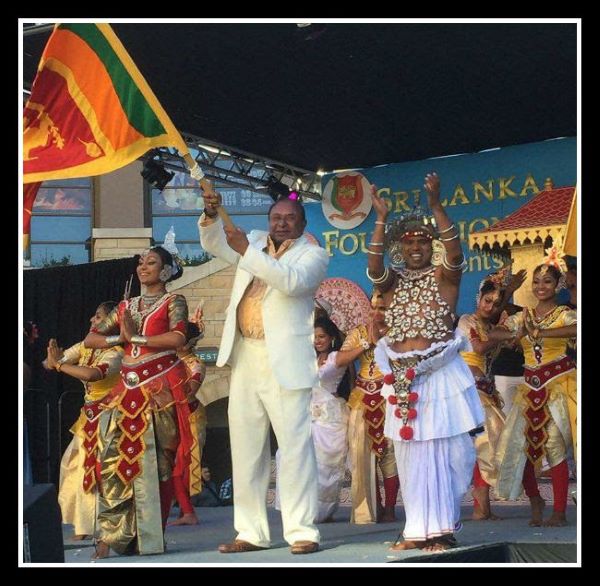The Rich Tapestry of Sri Lankan Cave Art: A Journey Through Time – By Nadeeka – eLanka

Sri Lanka, an island nation steeped in history and culture, is home to some of the most remarkable cave art in the world. These ancient artworks, etched and painted onto the walls of caves and rock shelters, provide a vivid window into the lives, beliefs, and artistic expressions of Sri Lanka’s earliest inhabitants. The history of Sri Lankan cave art is a fascinating tale of human creativity, spirituality, and connection to nature, dating back thousands of years.
The Origins of Sri Lankan Cave Art
The origins of Sri Lankan cave art can be traced back to the prehistoric era, with some of the oldest examples believed to be over 5,000 years old. These early artworks were created by the island’s first inhabitants, who were hunter-gatherers living in harmony with nature. The cave art of this period primarily consists of simple geometric patterns, handprints, and depictions of animals, reflecting the close relationship between these early humans and their environment.
As time progressed, the island’s inhabitants began to develop more complex forms of expression. The introduction of Buddhism to Sri Lanka around the 3rd century BCE had a profound impact on the art and culture of the island, including its cave art. Buddhist monks, seeking solitude for meditation, began to occupy caves and rock shelters, transforming them into monastic retreats adorned with religious symbols and imagery.
The Sigiriya Rock Fortress: A Masterpiece of Ancient Art
One of the most famous and well-preserved examples of Sri Lankan cave art can be found at Sigiriya, an ancient rock fortress located in the central Matale District. Sigiriya, also known as the “Lion Rock,” was built in the 5th century CE by King Kashyapa as his royal citadel. The fortress is renowned not only for its architectural grandeur but also for the stunning frescoes that adorn its rock face.
The Sigiriya frescoes, often referred to as the “Heavenly Maidens,” depict celestial nymphs and royal attendants in graceful poses, their delicate features and flowing garments rendered in vibrant colors. These frescoes are considered masterpieces of ancient art, showcasing the skill and sophistication of Sri Lankan artists during this period. The use of natural pigments, including red ochre, yellow, and green, has allowed these images to retain their brilliance for over a millennium.
The frescoes at Sigiriya are not just artistic creations; they are also symbolic representations of the king’s divine right to rule and his connection to the heavens. The presence of these celestial figures on the rock face would have reinforced the idea of the king’s sanctity and the spiritual power of the site.
The Aluvihare Cave Temples: Guardians of Buddhist Heritage
Another significant site of Sri Lankan cave art is the Aluvihare Cave Temples, located near Matale. These caves are believed to date back to the 3rd century BCE and hold immense religious and historical importance. The Aluvihare Temple is considered the birthplace of the written Pali Canon, the earliest scriptures of Theravada Buddhism, which were transcribed onto palm leaves within these very caves.
The walls of the Aluvihare caves are adorned with paintings depicting scenes from the life of the Buddha, as well as various Jataka tales, which narrate the previous lives of the Buddha. These paintings are executed in a distinctive style characterized by bold lines, vivid colors, and an emphasis on narrative detail. The art at Aluvihare reflects the deep spiritual devotion of the artists and the monks who lived and worked in these caves, creating a visual record of Buddhist teachings that has endured for centuries.
The Dambulla Cave Temple: A Treasury of Religious Art
The Dambulla Cave Temple, also known as the Golden Temple of Dambulla, is another iconic site of Sri Lankan cave art. Located in the central part of the island, the Dambulla Cave Temple is the largest and best-preserved cave temple complex in Sri Lanka, with a history that spans over 2,000 years.
The temple complex consists of five main caves, each filled with statues of the Buddha, Hindu deities, and Sri Lankan kings. The walls and ceilings of these caves are covered with intricate murals that depict various episodes from the life of the Buddha, including his birth, enlightenment, and parinirvana (final nirvana). The vibrant colors and intricate details of these murals reflect the high level of artistic achievement during the Anuradhapura and Kandy periods, when the temple was most actively developed and adorned.
The Dambulla Cave Temple is not only a place of worship but also a testament to the enduring legacy of Sri Lankan cave art. The continuous use and preservation of this site over the centuries have allowed it to remain a living cultural and religious heritage site, attracting pilgrims and art enthusiasts from around the world.
The Significance of Sri Lankan Cave Art
Sri Lankan cave art is more than just a collection of beautiful images; it is a profound expression of the island’s cultural identity and spiritual heritage. These artworks provide invaluable insights into the religious beliefs, social structures, and daily lives of the people who created them. They also serve as a reminder of the deep connection between humanity and nature, as many of the caves and rock shelters that house these artworks are located in serene and remote natural settings.
Moreover, Sri Lankan cave art represents a unique blend of indigenous artistic traditions and influences from neighboring cultures, including India and Southeast Asia. This cross-cultural exchange is evident in the stylistic diversity and thematic richness of the artworks, which range from simple prehistoric motifs to elaborate Buddhist murals.
Preserving Sri Lanka’s Cave Art for Future Generations
Today, the preservation of Sri Lanka’s cave art is a matter of great importance. Many of these ancient sites are vulnerable to natural erosion, environmental changes, and human activity. Efforts are being made by the Sri Lankan government, cultural organizations, and international bodies to protect and conserve these invaluable cultural treasures.
The study and documentation of Sri Lankan cave art continue to be an area of active research, with scholars and archaeologists working to uncover new insights into the history and significance of these ancient artworks. Through these efforts, it is hoped that the rich legacy of Sri Lankan cave art will be preserved for future generations to appreciate and learn from.
Conclusion
Sri Lanka’s cave art is a testament to the island’s rich cultural and spiritual heritage. From the prehistoric geometric patterns to the exquisite Buddhist frescoes, these ancient artworks offer a glimpse into the lives and beliefs of the people who once inhabited these caves. As we continue to explore and preserve these sites, we are not only safeguarding a vital part of Sri Lanka’s history but also honoring the artistic achievements of its people. In doing so, we ensure that the story of Sri Lankan cave art continues to inspire and captivate for generations to come.





















